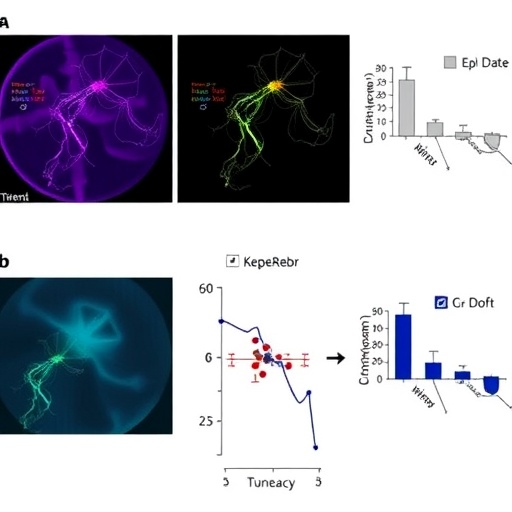Chronic Kidney Disease (CKD) represents a major health challenge globally, affecting millions of individuals and substantially impacting societies and healthcare systems. Among various biomarkers and clinical parameters utilized to assess the severity and prognosis of CKD, proteinuria stands out. High-risk proteinuria signifies not only an increased risk of kidney-related complications but also points to underlying systemic issues that can drive the progression of kidney disease. A recent study led by renowned researchers sheds light on the complexities surrounding disease progression, clinical outcomes, and the attendant treatment challenges faced by patients enduring CKD with high-risk proteinuria.
The initiation of CKD is often insidious, with many patients remaining asymptomatic until the disease progresses to a significant state. This delayed onset of symptoms complicates diagnosis and makes early intervention challenging. The study emphasizes that regular screening for proteinuria is essential for the early detection of CKD. High-risk proteinuria, often classified by the amount of protein in the urine, is a critical indicator that could alert clinicians to potential kidney damage. Understanding how this marker correlates with disease progression can enable more timely and effective therapeutic interventions.
In their investigation, Pecoits-Filho and colleagues explore the different pathways through which high-risk proteinuria affects the kidneys. The study highlights the importance of glomerular filtration and the subsequent implications when this filtration process is compromised. As various etiological factors, such as diabetes and hypertension, continue to contribute to CKD prevalence, it becomes crucial for nephrologists to comprehend how these conditions interplay with proteinuria levels, thereby exacerbating renal damage.
Furthermore, the disease progression observed in patients with high-risk proteinuria is not uniform. Genetic predispositions, environmental influences, and comorbid conditions lead to varying clinical trajectories among patients. This variability necessitates personalized management strategies, as a one-size-fits-all approach may not be effective. Clinicians must take into account not only the proteinuria levels but also the broader clinical context— including other biomarkers, patient demographics, and lifestyle factors—in their decision-making process.
In assessing clinical outcomes, the researchers found a clear link between the severity of proteinuria and adverse patient outcomes. The elevated levels of protein in the urine not only signify immediate kidney injury but are also correlated with heightened risks of cardiovascular events and mortality. This dual risk emphasizes the necessity for clinicians to prioritize monitoring and managing proteinuria levels. Interventions aimed at lowering proteinuria may prove lifesaving, not just in terms of preserving kidney function but also for enhancing overall patient survival.
The treatment landscape for CKD patients with high-risk proteinuria is fraught with challenges. Existing pharmacological options are numerous, yet many patients do not respond adequately to standard therapies. The study articulates the importance of evidence-based treatment protocols that adapt to the patient’s unique presentation, including the levels of proteinuria and accompanying diseases. Newer agents, including SGLT2 inhibitors and GLP-1 receptor agonists, have shown promise in managing CKD and reducing proteinuria, signifying a shift in therapeutic strategies.
Additionally, lifestyle interventions play a pivotal role in managing high-risk proteinuria. Knowledge of how diet, exercise, and weight management can influence renal health must be disseminated among patients and healthcare providers alike. The study drives home the importance of a multidisciplinary approach, where nephrologists, dietitians, and care coordinators work in tandem to support patients holistically.
One particularly striking conclusion drawn from the research is the pressing need for enhanced educational resources for both patients and clinicians. A lack of awareness regarding the implications of proteinuria and CKD can lead to suboptimal management strategies. By fostering an environment of education and understanding, healthcare providers can empower patients to take an active role in their health management.
In view of the complex interplay between CKD, high-risk proteinuria, and other systemic health issues, future research endeavors must aim at unraveling these intricate relationships. Identifying potential biomarkers that can predict disease progression more accurately will aid in tailoring individualized treatment plans. Furthermore, large-scale studies are needed to verify the long-term impacts of various therapeutic interventions on kidney health and overall patient outcomes.
As we venture into an era of precision medicine, the insights gained from this study offer a beacon of hope for CKD patients struggling with high-risk proteinuria. With continued research and collaboration within the medical community, advancements in treatment modalities and clinical practices can be achieved. The journey from diagnosis to treatment is often complex, but understanding the nuances of proteinuria’s impact on kidney health can profoundly influence the trajectory of CKD management.
The findings presented by Pecoits-Filho et al. underscore the critical need for a concerted effort to address the challenges faced by patients with chronic kidney disease. Expanding our understanding of how proteinuria interacts with disease processes will not only enhance patient outcomes but also contribute to more effective public health strategies. As we face a growing population of individuals affected by kidney disease, the implications of this research resonate profoundly across multiple domains, illuminating pathways for both scientific inquiry and practical application.
Overall, the intricate relationship between chronic kidney disease and high-risk proteinuria serves as a crucial focal point in nephrology. Advancing our understanding in this area is paramount for improving clinical outcomes and navigating treatment challenges. As research continues to evolve, it is imperative for health professionals to remain vigilant and adaptable, ensuring that every patient receives the comprehensive care they deserve in the face of this escalating health crisis.
Subject of Research: Chronic Kidney Disease and High-Risk Proteinuria
Article Title: Disease Progression, Clinical Outcomes and Treatment Challenges in Patients with Chronic Kidney Disease and High-Risk Proteinuria
Article References:
Pecoits-Filho, R., Bodegård, J., Ambery, P. et al. Disease Progression, Clinical Outcomes and Treatment Challenges in Patients with Chronic Kidney Disease and High-Risk Proteinuria.
Adv Ther (2025). https://doi.org/10.1007/s12325-025-03364-8
Image Credits: AI Generated
DOI: 10.1007/s12325-025-03364-8
Keywords: Chronic Kidney Disease, Proteinuria, Disease Progression, Clinical Outcomes, Treatment Challenges
Tags: asymptomatic chronic kidney diseasebiomarkers for kidney healthchronic kidney disease awarenessclinical outcomes in CKD patientsearly detection of kidney damagehigh-risk proteinuria implicationsimportance of proteinuria screeningkidney disease progression factorsrenal health research findingssystemic issues in CKDtherapeutic interventions for CKDtreatment challenges in proteinuria





